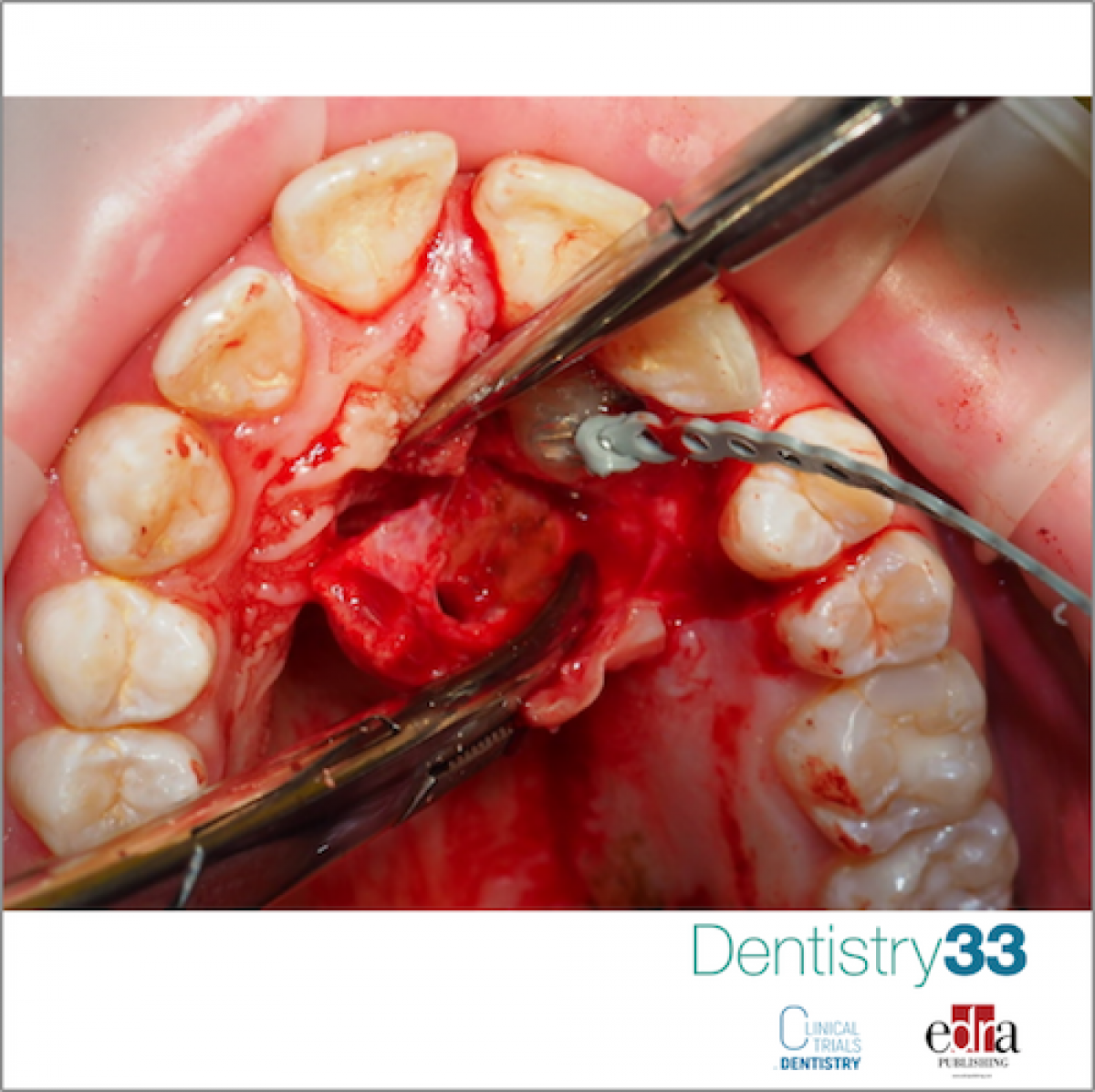
Open vs closed surgical exposure of palatally displaced canines
Davide Elsido
The treatment of palatal displaced canines (PDCs) is one of the most challenging treatments in orthodontic dental care. The invasive and long-lasting treatment often requires interceptive extraction of the deciduous canine at an early age, which might correct the eruption path of the PDC in 67%–69% of the cases. When interceptive treatment is unsuccessful, subsequent surgical exposure with following long-lasting orthodontic care is needed. The preferences for which of the two main surgical exposure techniques to choose, open or closed exposure, differ. The main difference between the techniques is whether the PDC is allowed to erupt spontaneously or if active orthodontic traction starts directly after surgery. In the open exposure technique, the palatal tissue is removed, and the canine is allowed to erupt spontaneously without any orthodontic traction until it erupts into the oral cavity. In the closed exposure, a chain is bonded to the PDC and the canine is orthodontically moved under the mucosa until eruption. The choice between the two current surgical techniques has been suggested to influence important outcomes such as patients’ perceptions of pain, eruption and treatment time and complications. Thereto, patients’ perceptions of invasive dental treatments may incorporate the risk of future dental anxiety, while prolonged orthodontic treatment time contributes to harmful side effects such as root resorption. These are important issues for both patients and their parents. In cases with several treatment options, the clinicians should choose the treatment that most benefits the patient. Inconsistency regarding treatment outcomes, with no consensus on which surgical technique benefits patients the most, leads to a need for randomized controlled trial.
This kind of RCT appeared on a recent issue of the European Journal of Orthodontics, comparing the outcomes of open and closed surgical exposure of PDCs.
Comparison of the two surgical exposure techniques, open and closed exposure, showed that: treatments were equally successful, with all PDCs aligned in their correct position in the dental arch; PDCs in the open exposure group erupted, in mean, 3 months faster, but the total treatment time was equal between the groups; the closed exposure group experienced more pain and discomfort during active orthodontic traction and consumed more analgesics; there were no indications of increase in dental fear levels, regardless of the surgical technique performed; clinical side effects in terms of root resorption or decreased root length did not differ between surgical exposure groups and group differences in periodontal status of the adjacent laterals were negligible and of no clinical relevance.
 Related articles
Related articles
Orthodontics 20 July 2022
The maxillary canines usually emerge at the mean age of 10.5 years in girls and 11.5 years in boys, with individual variation of 3–4 years. In 2–3 per cent...
 Read more
Read more
Editorials 10 October 2025
With proud smiles and crisp white coats, ninety-three learners from the DDS Class of 2029 and the International Dentist Pathway Class of 2028 marked the start of their dental careers at the UCSF...
Periodontology 10 October 2025
Continuous professional development (CPD) in Periodontology refers to the overall framework of opportunities that facilitate a life-long learning practice, driven by the learner-practitioner and...
TheraBreath, the #1 alcohol-free mouthwash brand in the U.S.*, has introduced a new line of dentist-formulated, clinically tested toothpastes designed to support professional oral care...
News 10 October 2025
New officers and trustees were installed at the Minnesota Dental Association’s Leadership Conference on September 19 in Minneapolis.
News 10 October 2025
Smartee Denti-Technology today announced that Professor Gang Shen, its Chief Scientist and Executive President of TaiKang ByBo Dental, has once again been named to the World’s Top 2% Scientists...











